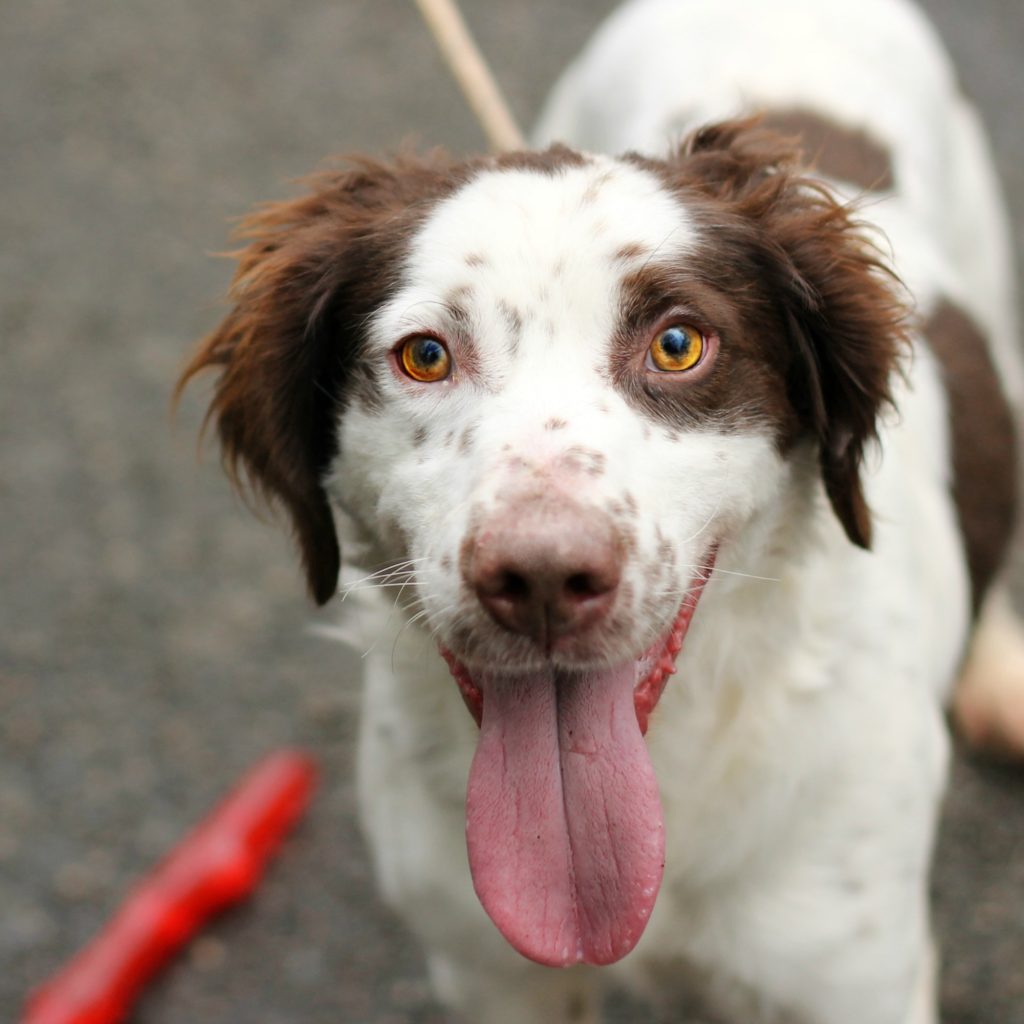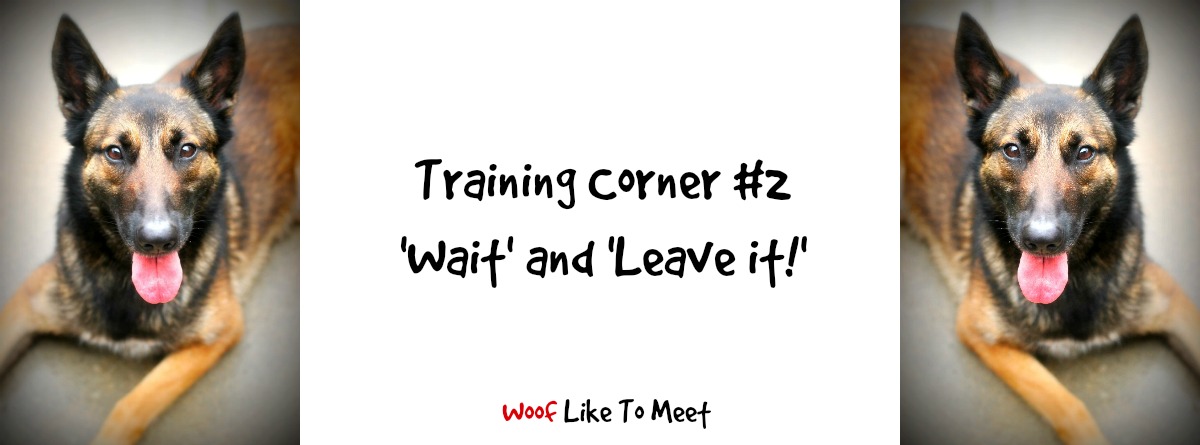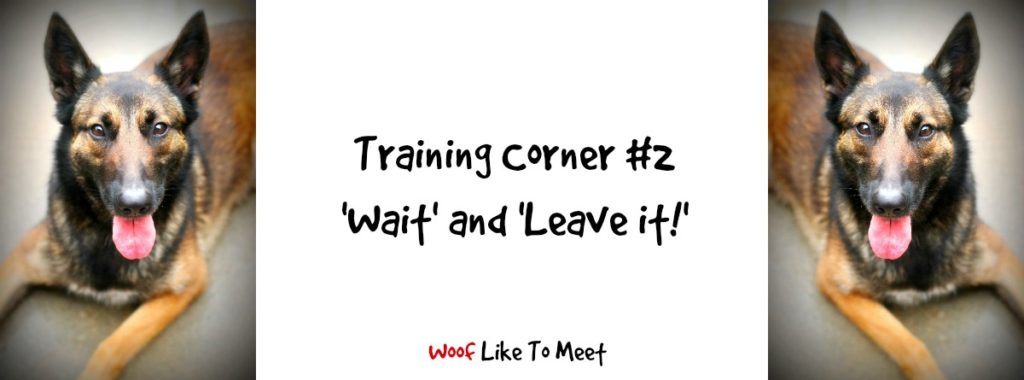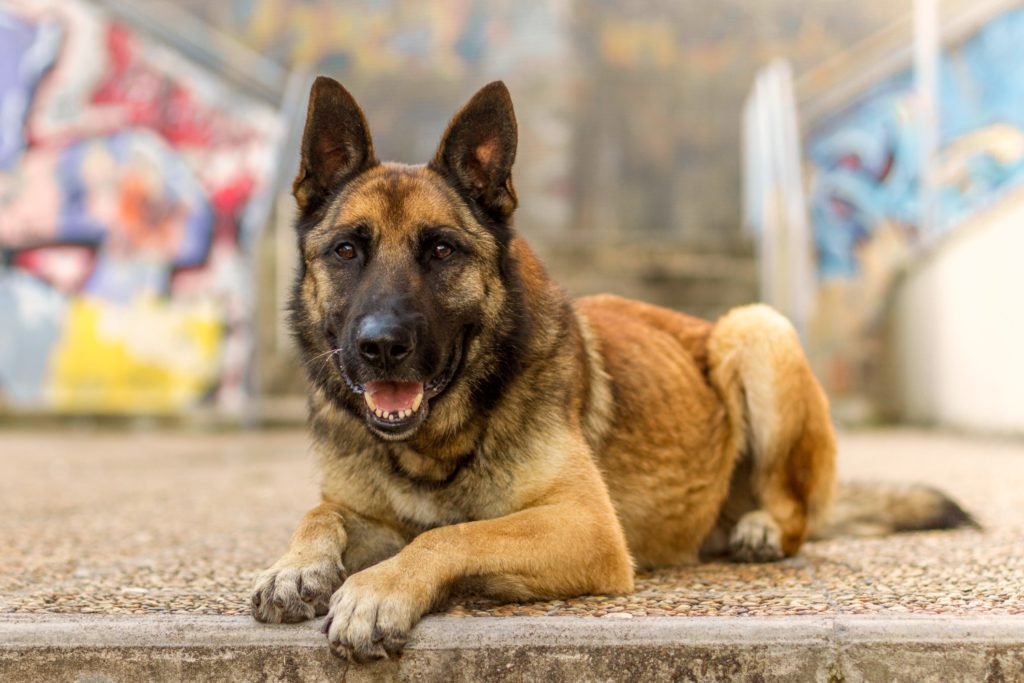Last time, I looked at how a hand touch can be a really good foundation skill, but there are two other skills that can also really help you with dog manners: ‘Wait!’ and ‘Leave it!’
Just to clarify, I treat both of these slightly differently. ‘Wait!’ means you can have what you’re trying to get but you need to hold on a little, and ‘Leave it!’ means you aren’t going to have what you want – I don’t want you to touch it at all.
I teach dogs both behaviours, but I use them differently. ‘Wait!’ means ‘Don’t mug me, don’t get in my pockets, don’t pester me for a treat or a game… chill your beans a minute!’ and I use it to mean that you may get the game, treat, door open, bed, food bowl or whatever and is more about manners. Sometimes I’ll pair it with a ‘stand’ or a ‘sit’ or even a ‘down’. I’ll usually reward ‘Wait!’ with what the dog wants – whether that’s food, movement or a door open. It’s different from ‘stay’ or ‘stand’, but it implies a bit of being still. ‘Stay’ means I’m going away and I’ll come back, but I want you not to move. I think it’s important for a dog to know the distinction. ‘Wait!’ is more of a ‘I’m right here, but I need you to give me a second.’ It’s a canine pause button.
It also teaches them that if they stop, good things come to them!
For ‘Leave it!’, I don’t reward with the thing. It means you don’t touch that thing, you don’t approach that thing and you don’t get the thing.
Why do I teach them?
Because they are really good basics for impulse control and manners. A great ‘Leave it!’ means you can drop something on the floor and know that your dog won’t eat it. If you drop a pill on the floor and you have a cocker spaniel, you’re going to want a bit of impulse control. If you have a dog who eats other animals’ turds, a ‘Leave it!’ is a must as well. ‘Leave it!’ is great with food objects, but also with toys or even with other animals. I’m not sure it’s strong enough to override the starey-eyed predation behaviours of an animal who is fixated on a smaller one, but if you’ve taught it long enough and hard enough, coupled with very low level chase behaviours, you’re going to find ‘Leave it!’ may work for that as well. If you’ve got a relentless sniffer, it works there too. It’s an interruptor, like ‘touch’ that means you can ask your dog to disengage from play or from approaching people who don’t want to be approached.
Knowing ‘Wait!’ can help you build up duration on a chin touch or sit, as well as other behaviours that require a dog to hold a position. It’s also good to prevent bolting out of doors, getting in cars, patience around food bowls and so on. Knowing ‘Sit’ or ‘Down’ cues can also help, because many of the moves require a dog to move forwards, which is hard when you’re in one position.
You can also follow it with a release cue, like ‘free’, or ‘go’ or ‘take it’. I use ‘Go!’ or ‘Take it!’ depending on whether it’s an action/movement, like going through a door, or if it’s something the dog will have in its mouth.
‘Leave it!’ is obviously harder because it involves the dog understanding that I’m never, ever going to get that thing that I wanted to have. It’s not a pause, it’s a stop. ‘Leave it!’ is also different from ‘Drop’ or ‘Out’, since the dog will already have something in its mouth for that.
I teach both because if I only teach ‘Wait!’ it means my dog will be expecting the thing I am asking them not to engage with, and that can be frustrating if they are expecting to receive it which devalues the ‘wait!’ cue; if I only teach ‘Leave it!’, really I’m expecting them to disengage completely – which gives them free licence to go off and do other stuff. Why would you stay interested in something you know you aren’t going to get? I want to use that interest and focus for ‘Wait!’
Step 1 is to teach ‘no mugging’.
And you can see Emily from Kikopup doing this in the video above.
You can do this with a grabby adult dog – leather gloves and big, low value treats are ideal. Some dogs are just not used to being hand-fed. Teaching this also helps dogs get used to hand-feeding, which can be useful for a variety of behaviour modification plans.
You can also see Chirag Patel demonstrate Food Manners with a puppy. Part of this includes the notion of ‘wait’ as well as focusing on the handler or partnering it with a hand touch.
You can also see how he uses it to help dogs understand that attention-getting behaviours like barking, scratching, mugging or biting don’t work. It’s all about patience! This is important. I do hate seeing trainers accept these behaviours or just ignoring them. A dog should very quickly learn that they don’t need to engage in these behaviours to get you to work with them.
In this video, Nando Brown explains how to teach ‘Leave it!’ and why you should get the behaviour first, before you add the cue word, ‘Leave it’
And although he points out that you don’t have to shout, many of us do (oops!) when it’s something that it’s really important our dogs leave alone, so it’s worth pairing your ‘Leave it!’ with lots of different levels of tone and volume. You can desensitise your dog to your changing vocal pitch.
If your dog is finding it really hard to learn ‘Wait!’ and they continue mugging you, start when they are full (if you are using food) or when they are played out (if using toys) and use something really low value. If my dog mugs me for a squeaky ball, I’m going to dial it back a notch and use a rope which he doesn’t find as stimulating.
This is Hagrid. He came to the shelter with a big impulse control problem, a big mugging problem, a massive chip on his shoulder about other dogs, a hard mouth and a misunderstanding about hands being chewtoys.
He learned ‘Wait!’ with a pair of leather gloves, some huge, huge low-value treats and a very flat hand . It also helped him with dog aggression because we would play ‘Wait!’ with ‘Look at Me!’ when other dogs passed until it got to be a habit. Other dogs passing and him playing ‘Wait!’ meant he anticipated the approach of the other dogs. It also taught him some impulse control, some manners and some motor control over that clacky-bitey snap-snap mouth of his.

And this is Marty. He’s a teenage springer x brittany mix (there’s something you don’t want to do by accident!) and as you might imagine, he is a livewire. Impulse control is a must. Plus, he doesn’t have a particularly gentle mouth. His thing is toys. So we are learning ‘Wait!’ with toys. We started at the end of a thirty-minute play session and we started with a millisecond before stretching it up. He can wait now for about two seconds. For a springer x brittany, that’s like five hours, I promise. He also has four feet on the floor. That’s also a very big achievement.
Make it easier by: choosing a moment when your dog is less aroused, starting with lower value objects and shorter durations. If your dog is finding it really, really hard, you may also want to teach ‘four feet’ first.
Once your dog has mastered the basics, make it harder by:
- Increasing duration: asking for longer and longer waits. Obviously, that doesn’t work with ‘Leave it!’
- Increasing difficulty: asking for wait or leave it with a more highly valued treat or reward, or in more difficult situations. I didn’t start out asking Hagrid to ‘Wait’ when another big, posturing snappy male was going past! Likewise with ‘Leave it!’ I didn’t start with Tilly’s most prized wild boar full-body roll, I started with a very, very low value treat. To be fair, if it’s vital that she leaves it, I usually say ‘Does Tilly want a treat?’ which has been known to bring her back in an alley of rollable, treasured fecal matter. It’s hard to say ‘Does Tilly want a treat?’ with the same accidental growl as ‘Leave it!’ might.
If you are going to do agility, obedience, gundog training or other types of dog competition stuff, a good ‘Wait!’ is vital too.
So get out and get training!



